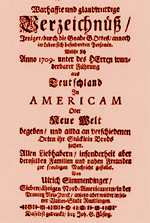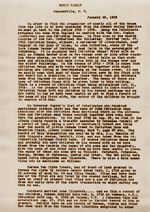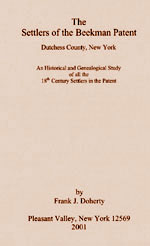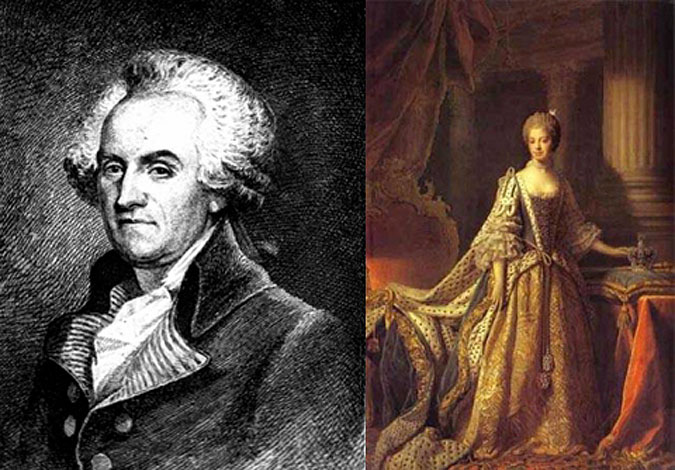|
"They were distinguished for their industry and thrift, being mainly engaged in agriculture, and sometimes have been under-valued as inferior to other elements of the population. But the homebred virtues by which they were distinguished, their peace-ful and law-abiding character, and their orderly conduct made them a constituent part of the nation's strength and security."
—The early Germans of New Jersey : their history, churches, and genealogies (1895), by Theodore Frelinghuysen Chambers, 1849-1916.
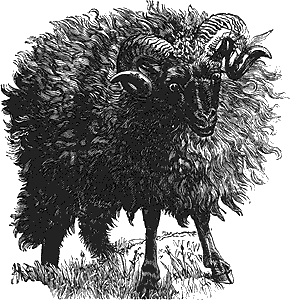
|
Changes? Additions? Complaints? Outright insults? E-mail me here.
|
|
After the Hunter project collapsed, the Palatines spread throughout New York, Pennsylvania and New Jersey. According to Knittle, "Within the next five years, many Palatines moved elsewhere. Several went to Pennsylvania, others to New Jersey, settling at Oldwick or Hackensack, still others pushed a few miles south to Rhinebeck, New York, and some returned to New York City, while quite a few established themselves on Livingston Manor [where they had originally been settled]. . . Some forty or fifty families went to Schoharie between September 12th and October 31, 1712." Christian's sons Conrad, George and Harmanus stayed in the area of Albany, near their father. But one son, Rheinhardt (probably named after Philipp Reinhard II, Graf zu Solms-Hohensolms), moved father south to New Jersey.¹
|
| Book
Information |
Book
Image |
|
| Name: |
| Warhoffte
und glaubwurdige Verzeichnuss jeniger Personen; welche sich anno 1709 aus Teutschland
in Americam... | | Author: |
| Ulrich
Simmendinger | | Publisher
of English Translation: |
|
Genealogical Publishing Company | |
|
|
|
SOURCE
INFORMATION: 1966 Translation: "True and Authentic Register of Persons
Living, by God's Grace, who In the Year 1709, Under the Wonderful Providences
of the Lord Journeyed from Germany to AMERICA or NEW WORLD and there seek their
Piece of Bread at various places. Reported with Joy to all Admirers, especially
to their Families and Close Friends by Ulrich Simmendinger. A North American,
Seven Years in the Province of New York but Now Returned to his Native city, Reutlingen.
Printed there by John G. Fuesing. (Printed ca. 1717) |
|
Rheinhardt was married around the year 1715 (the same year that John Hause marries in the family legend) to a woman named ANNA ELISABETH (the last name varies in different documents), and was naturalized on January 10, 1715/16 as "Rynier Hous" and listed in Phillipsburgh, New Jersey (in present Westchester County). Eventually, he moved to Hackensack in Bergen County. The "Simmendinger Register" lists Rheinhardt as living in Hackensack in 1716 with wife Anna Elizabeth and a child, near the children of his stepmother, the Beckers.
Prior to being settled by the Dutch in 1693, Hackensack was home to the thriving Lenni Lenape Indian community that lived and prospered along the banks of the Hackensack River. (In their language, Hackensack meant "mouth of a river.") The Hackensacks formed villages, each one practicing and serving as its own government. Interestingly enough, these villages practiced a democracy, where all members of the tribe were involved in the decision-making.
Once the Dutch arrived in Bergen County, they began to build the area into a permanent settlement they named Bergen. Through their dealings with the Chief of Hackensack, Oratam, the Dutch were able to live harmoniously with the Indians. By the mid-1600's, the British began to arrive in the Hackensack area.
When the colony of New Netherland was taken over by the British and renamed New York in the 1600's, large numbers of Dutch remained. New Jersey then was created as a division of New York. For a time it was divided into the proprietary colonies of East and West Jersey, until 1702. A decade later, when Rheinhardt moved into Hackensack, it was a time of uneasiness; laws and customs were being created as people of different etnicities and religions moved into the area, the border between New York and New Jersey was tenuous. From then until the Revolutionary War's end in 1783, Hackensack was an area of unrest.

"New and Exact Map of the Dominions of the King of Great Britain on ye Continent of North America, containing New Foundland, New Scotland, New England, New York, New Jersey, Pensilvania, Maryland, Virginia and Carolina, according to the Newest and most Exact Observations By Herman Moll, Geographer," created in 1715. (Click here to enlarge.) |
| Research Document |
Image
|
|
| Name: |
|
Haus genealogy, 1600-1918 |
| Collection of: |
|
Grace Stubbs Rice |
| Research by: |
|
Melvin Rhodes Shaver and Frank D. Duel |
| Year: |
|
1933 |
| Compiled by: |
|
N. Dean, June, 1980 |
|
|
|
|
SOURCE INFORMATION: © 2002 Division of Rare and Manuscript Collections, Cornell University Library: Carl A. Kroch Library, Ithaca, NY 14853-5302 |
|
Rheinhardt then moved near Sleepy Hollow, even attending the very Dutch Reformed Church of Washington Irving's story. Rheinhardt's chuch even records him as "Johann Rheinhardt" on occassion (see churchlists in the Holland Society book, above).
When he was Naturalized, on 10 Jan 1715/16, Rheinhardt listed his occupation as "yeoman," meaning he was a farmer who cultivated his own land. This term was transported to the North American colonies from England, and derives from the Middle English yoman. Yeomen emerged out of feudal hierarchies of manorial Europe as owner-operator agriculturalists. As part of the British colonization of North America, the Yeomen class eventually reformed themselves into a social majority. Colonial farm life was far from easy, as the land could only be made suitable for farming after months of manual labor. Before 1720, most colonists in the mid-Atlantic region worked with small-scale farming and paid for imported manufactures by supplying the West Indies with corn and flour. In New York, a fur-pelt export trade to Europe flourished adding additional wealth to the region. After 1720, mid-Atlantic farming stimulated with the international demand for wheat. Farming was different in the mid-Atlantic, as German farmers generally preferred oxen rather than horses to pull their plows. When there were no hired hands or oxen available, the wives had to help out. Many Palatine women worked in fields and stables, but the increased workload brough increased independence and power. German and Dutch immigrants also granted women more control over property, which was not permitted in the local English law. Unlike English colonial wives, German and Dutch wives owned their own clothes and other items and were also given the ability to write wills disposing of the property brought into the marriage.
When they both weren't working in the fields, Rheinhardt and Anna Elisabeth were starting a family:
CHILDREN OF RHEINHARDT AND ANNA ELISABETH HAUS
|
|
JOHANN HEINRICH HAUS, born 5 Nov 1715 at Yonkers Fall, Westchester Co., New York. Baptized on Pentacostal Sunday, 1716 at New York City; Sponsors John Marcels Konig, John Heirich Gessinger and wife Anna Elisabeth. (SOURCE: Dutch Reformed Church Records from New York and New Jersey. Holland Society of New York, New York, New York.) He married Anna Catherine Jonger (Young) on 11 Jul 1736 at Peter Lossing's home in Clove, Beekman Patent, in Dutchess County (New York City Lutheran Churchbook) and they had children baptized at Fishkill Ref., Loonenburg Lutheran, and Tappan Reformed Church: Everardus (bp. 6 Oct 1745); Annatje (b. 1 May 1747); Catharina (?); Sarah (bp. 14 Mar 1756).
|
|
ANNA JULIANA HAUS, born 5 Feb 1718 in Philipsburg, Westchester Co., New York, and baptized on Pentecost in New York City, sponsors Johannes Reitelsdorffer and Anna Julianna Mutschin (New York City Lutheran Churchbook). She was confirmed 16 Oct 1734 (New York City Lutheran Churchbook).
|
|
SUSANNA HAUS, born 9 Apr 1720 at Tappan and baptized 26 Jun 1720 at Hackensack. Sponsors Johann Niclass Neidebber and Susanna Klugin (New York City Lutheran Churchbook).
|
|
JANNET (JANNITJE) HAUS, married Thomas Meredic (or Mareddie) on 12 Oct 1737 in Fishkill, Dutchess, New York. (SOURCE: Dutch Reformed Church Records from New York and New Jersey. Holland Society of New York, New York, New York.)
|
|
CHRISTIAN HAUS, born 2 Aug 1721 at Tappan, New York. Baptized 5 Aug 1722, at Hackensack; sponsors Philipp Zerbe and Christina Velden (Felton). (SOURCE: Dutch Reformed Church Records from New York and New Jersey. Holland Society of New York, New York, New York.) He married Elisabetha and they had a son, Rheinhard, baptized on 26 Mar 1748 in Hackensack, Bergen, NJ (witnesses: Rheinhard Haus and wife Elizabetha).
|
|
JOHANNES HAUS b: 1726. Baptisms, Lutheran Church, New York City, he was baptized, at 9 weeks old, on 29 May 1726, to parents Reinhard Haus and his wife, Anna Elisabeth. Witnesses were Hannes Moots & Anna Marie Veltin. See record, at right (Source: Dutch Reformed Church Records from New York and New Jersey. Holland Society of New York, New York). Johannes married SARAH WHEELER. Children listed below.
|
|
MARIA HAUS, baptized at 6 weeks old in 1728. Sponsors Martinus May and wife Maria. (SOURCE: Dutch Reformed Church Records from New York and New Jersey. Holland Society of New York, New York, New York.) She married Paulus Hopper (SOURCE: "Genealogies of New Jersey Families: Families A-Z, pre-American notes on old New Netherland families," Genealogical Publishing Company, 1996. 1139 pages; p. 345-6.)
|
|
MARIA ELISABETHA HAUS, born 21 Mar 1731. Baptized 2 months and 14 days old on 5 June 1731. Sponsors Qvirynus Neidhebber and wife Maria Elisabetha. (SOURCE: Dutch Reformed Church Records from New York and New Jersey. Holland Society of New York, New York, New York.) She married Daniel Gerow in Clarkstown (New Hempstead), New York, and they had a daughter, named Margaret Geroe. (Information from Linda Clickner, whose husband is Maria Elisabetha's great, great, great, great, great-grandson.)
|
 |
RHEINHARDT HAUS, baptized 21 Aug 1733 in Tarrytown, Westchester, New York ("Reindert"); Sponsors Johannis Clemens and wife Marritie (Tarrytown Reformed Churchbook; Dutch Reformed Church Records from New York and New Jersey. Holland Society of New York, New York, New York.) He had a son named Rheinhardt, as well, and both Rinard House Sr., and a Rinard House Jr. appeared in Gilbert Cooper's Militia here and here, and in Col. Ann Hawkes Hay's Regiment here. His other son, John, subbed for both of them at times, according to his military pension. John served with 2nd Lieutenant Thomas Blauvelt, then married Margaret Blauvelt later in life. A "John House" who served in Gilbert Cooper's Militia and Ann Hawkes Hay's Regiment testified in 1833 for a John J Blauvelt, who was applying for a Revolutionary War Pension and Bounty-Land Warrant (Application Files Publication Number: M804, page 14), as well as for Rinard Hopper, whom he served with in New Jersey (Page 24). John died at Clarkstown, New York, on 1 Jan, 1845. "Ramapo Lutheran Church Records, 1750-1817" in Proceedings of the New Jersey Historical Society, Vol. VIII, No. 1 (April 1913), p. 7: "Reinhart Willers, bp. 11 Sep 1757 Ramapo Lutheran Church (no mother's name in bp. record) (wit: Reinhard Hanns [Haus?] and his wife."
|
|
| Book Information |
Book Image
|
|
| Name: |
|
Year Book of the Holland Society of New York |
| Author: |
|
Theodore M. Banta |
| Publisher: |
|
Knickerbocker |
| Year: |
|
1903 |
| Chapter: |
|
Some Records of the Early Lutheran Church, New York |
| Johann Rheinhardt Haus Family: |
|
17, 62, 72, 77, 89, 92 (Index: 94- 118) |
|
|
|
|
|
|
There doesn't seem to have been a consistent church or parish that the Haus family attended, but that was common in Colonial America. By the mid-1700's, fewer than 20% of the population was linked to a specific church or religion (10% in New York City), and most of the church members were women. The congregation of a church was not there to enforce strict religious doctrines—they were there to provide a focus for family life in the community, and to help settlers make connections and survive in the wilderness of the New World.
The Rheinhardt Haus family seemed to attend German (Dutch) Reformed and Lutheran churches, but that could just be because they were the most common in German immigrant communities, and settlers went to whatever church was available to them. German Reformed congregations were similar enough to the established Dutch Reformed religion that they accepted the Dutch Reformed Classis of Amsterdam as their ecclesiastical superior. The Classis provided spiritual guidance, and certified ministers as orthodox. But by 1741, there were fifty-one German Reformed congregations in the Mid-Atlantic Colonies, and only four competent ordained ministers to care for the region's 15,000 German Reformed settlers. So in rural areas like the Haus family lived in, the churches were usually became "pietistic," and threw away doctrinal exactness in church. The clerical education of the preacher meant nothing. Communion was limited to those who made a full confession, and the worship was spontaneous and ecstatic. This emphasis on personal religious experience over theological dogma or liturgy won over many small independent sects and unchurched families in German areas, and forty-nine more congregations developed by 1750, during the period of "The Great Awakening."
The Lutheran parish of Rev. Justus Falckner, a pastor who began his ministry in New York City in 1703, extended from Albany to the Upper Raritan region or Hunterdon county in New Jersey. From 1703 to 1714 he ministered to Holland Lutherans in the region of Hackensack, in Bergen County, New Jersey. Services that he performed for the Johann Reinhardt Hauss family are listed, above.
"...In my dealings with these people I find very little gratitude for favors done them, & particularly that those who were best taken care of & settled on good Lands by my Predecessor are the most apt to misrepresent him and this is managed by a few cunning persons among them that lead the rest as they please, who are for the generality a laborious and honest but a headstrong ignorant people."
—Governor Burnett, 21 Nov 1722; "The Documentary History of the State of New York," by E.B. O'Callaghan. Volume III p. 429. Albany: Weed Parsons & Company, Public Printers, 1850
|
| Personal Information |
Deed Image
|
| Granter: |
|
House, Rinert Sr. |
| Grantee: |
|
House, Johannes |
| Township: |
|
Haverstraw (present-day Clarkstown) |
| County: |
|
Orange (present-day Rockland) |
| Province: |
|
New York |
| Date: |
|
3 Apr 1756 |
| Price: |
|
$100, "hand-paid" |
|
|
|
SOURCE INFORMATION: Clerk's Office, town of Clarkstown, Rockland Co., NY; 10 Maple Avenue, New City, NY 10956 (845) 639-2000. Website |
By 1750, about 50,000 Germans came to live in British North America, many of them settling in the Mid-Atlantic Region. Approximately 8.8 percent of white Americans were of German ancestry, and 3.5 percent were of Dutch origin. Yeoman farmers like Rheinhardt, who owned his own modest farm and worked it primarily with family labor became the embodiment of the American Colonist: honest, virtuous, hardworking, and independent. New York's Governor Burnet, however, refered to the Palatine yeoman class as "a laborious and honest but a headstrong, ignorant people." However, those values would soon make yeomen farmers central to the republican vision of an emerging nation. Because family farmers didn't exploit large numbers of other laborers and because they owned their own property, they were seen as the best kinds of citizens to have political influence in a new republic.

The "Old Dutch Church" at Sleepy Hollow (1697), where the Van Alens, the Gardeniers, the Wheelers, and (occassionally) Rheinhardt Haus attended. The Reformed Church of the Tarrytowns has continued since 1697. In that year, a congregation was organized with Guilliam Bertholf as Pastor and Abraham de Revere as Elder and Jan Ecker as Deacon. The congregation worshiped in the 1685 colonial Dutch-style building built by Frederick Philipse on the Manor of Philipsburgh. It is located in North Tarrytown, New York, which changed its name in 1997 to Sleepy Hollow, New York. |
Second Generation: Johann Heinrich Haus
|
| Book Information |
Book Image
|
|
| Name: |
|
The Settlers of the Beekman Patent, Dutchess Co., NY, Vol. 6: Haden to Hunt |
| Author: |
|
Frank J. Doherty |
| Chapter: |
|
The House Families (Rheinhardt Haus line) |
| Publisher: |
|
Pleasant Valley, NY 12569 |
| Year: |
|
2001 |
|
|
|
|
A Study of the families who lived on a patent in Dutchess Co., New York. This book lists John Haus and Sarah Wheeler in Rheinhardt's line. |
|
JOHANN HEINRICH HAUSE was born on 5 Nov 1715 at Yonkers Fall (part of a 24,000 acre Dutch land grant that ran from the current Manhattan/Bronx border at Marble Hill northwards for 12 miles, and from the Hudson River eastwards to the Bronx River), and baptized on Pentacostal Sunday, 1716, at New York City with sponsors Johann Marcus Konig, Johann Heinrich Gessinger and wife Anna Elisabeth. On 11 Jul 1736, at Peter Lossing's home in the Clove, Beekman Patent, Dutchess County, New York, Johann Heinrich married ANNA CATHARINA, daughter of Johannes Eberhard and Anna Gertrude (Schmidt) Jong of Rombout, Dutchess County (New York City Lutheran Churchbook). It's listed this way in the Hudson Valley records:
- Married July 11, 1736 Johann Heinrich Haus an unmarried young man born at Phillipsburg, son of Rheinhard Haus and wife Anna Elizabeth to Anna Catherine Jonger (Young) an Unmarried young girl born in Dutchese County, a daughter of John Eberhard Jong and wife Gertrude both living in Dutchese county.
For a time, they apparently lived on the Beekman Patent in Southeastern Dutchess County, New York, settled early in the eighteenth century by Germans, Dutch, and New Englanders, plus a smattering of others from Spain, Italy, Ireland, and elsewhere. Dutchess County is located about sixty miles north of New York City, between the state of Connecticut and the Hudson River. Johann Heinrich was taxed nearby at Rombout in 1753-4. Here's a listing of all their known children:
CHILDREN OF JOHANN HEINRICH and ANNA CATHARINA HAUS
|
|
EVERARDUS (EVERT) HAUS was bp. 6 Oct 1745 at Fishkill Reformed Church with sp. Johannis Jong and Eva Brill. He married Elizabeth Hill on 16 Oct 1765 at Rombout Presbyterian Church.
|
|
ANNATJE HAUS was born on 1 May 1747 and baptized 24 Jun (2nd Trinity) 1759 in Beekman, Dutchess County, New York, with sp. Simeon Lossing and Eibje Buys, with parents Joh. Henr. Hauss and Catharina. Recorded in Zion Lutheran Church, Athens, Greene County, New York.
|
|
CATHARINA HAUS (date of birth unknown) married Gabriel Tomkins on 14 May 1769 at Rombout Presbyterian Church in Rumbout (Poughkeepsie), Dutchess, New York In the 1790 census, they are listed with six children in Fishkill, Dutchess, New York. They lived there until 1820, when they moved back to the Beekman patent.
|
|
SARAH HAUS was baptized on 14 Mar 1756 at Rombout Presbyterian Church in Rumbout (Poughkeepsie), Dutchess, New York.
|
Second Generation: Johannes Haus
JOHANNES "JOHN" HAUSE was born in 1726, according to the New York City Lutheran Church Book. Sometime in the 1740's (usually charted as 1744, but listed by some in his daughter Anna Margaretha's line as 1739 in Linlithgo, Columbia County) John married SARAH WHEELER (or WEILER), from a prominent local family based in Kinderhook, Columbia County.
After the formal engagement of John and Sarah came the "posting of publication of the banns" a fortnight before the wedding, so that any person with reason to object to the marriage could do so. (We have no record of this ritual for John and Sarah, but we know her family, in particular her grandfather, Everett, practiced it.) Marriage was not conducted with the bride and groom in special gowns, but in the best clothes they already owned.
John and Sarah lived long, productive lives, with extensive family and friends. The records of their lives are numerous in the church records of the time—you just have to be patient and check EVERY spelling variation. (In those days with few schools and no formalized language, the spelling of names was usually done phonetically, so John's last name often changed from Haus to Haas to Haws to Hauss to Howes to Huus to Huis to Hous to House to Hause—for the christening of his daughter Marritje in 1750, John III's name was even listed as "Johamnes Huyser"). Here's a listing of all their known children:
CHILDREN OF JOHANNES HAUS AND SARAH WHEELER
|
|
ELISABETH (or Lisabeth) HAUSE, born on 9 April 1747 in Orangetown, Rockland County. Christening: 10 May 1747; Reformed Church, Tappen, Rockland, New York. Parents: Johannis Houys and Sara Willier. Sponsors: Ryndert Houys and wife, Elizabeth. Source: The Baptism Record of the Tappan Reformed Church, Tappan, Rockland County [1694-1899]. Elisabeth married John Decker Robertson and had a daughter: Lisabeth Robertson (Sponsor: John Haus, & wife Sara Wieler, pictured at right), according to the Baptism Record of Linlithgo Reformed Church: Livingston Linlithgo Reformed Church 1722-1889. On 7 Feb 1768, John Haus and his wife, Sara Wiler, stood as sponsors for Lisabeth, daughter of Jan Decker Robertson and Lisabeth Haus.
|
 |
ANNA MARGARETHA HAUSE, born on 15 Apr 1749 in Kakiat, Rockland, New York. Christening: 13 May 1749 New York. Married Peter Klapper (c. 2 Apr 1743 in Red Hook, Dutchess, New York) Abt 1768 in Columbia Co., New York. They had the following children: Johannes P. (c: 11 Dec 1768 in Reformed Church, Claverack, Columbia, New York); Henry Peter (b: Abt 1770 in Columbia, New York); Jacob (b: 2 Feb 1773 c: 1773 in St. Thomas' Lutheran Church, Churchtown, Claverack, Columbia, New York); Petrus (b: 23 Jul 1777 c: 12 Aug 1777 in Reformed Church, Claverack, Columbia, New York); Sarah (b: 29 Sep 1779 c: 17 Oct 1779 in Reformed Church, Linlithgo, Livingston, Columbia, New York) Critje (b: 22 Jun 1782 c: 14 Jul 1782 in Reformed Church, Claverack, Columbia, New York); Wilhelm Peter (b: 21 Sep 1784 in Clapper Hollow, Albany, New York c: 1784 in West Sand Lake, Rensselaer, New York); Nicholas (b: 16 Jun 1787 c: 8 Jul 1787 in Reformed Dutch Church, Albany, Albany, New York); and Maria (b: 14 Mar 1790 c: 19 Mar 1790 in West Sand Lake, Rensselaer, New York. Margaretha died abt 26 Jan 1833 in Bethlehem, Albany, New York. Her will was proved 26 Feb 1833. Data provided by James Dibble - provided baptism place - Lutheran Church, NYC.
|
 |
MARRITJE HAUSE, christened 15 Oct. 1750 in Orangetown, Rockland County, with her parents listed as "Johannes Huyser and Sarah Weiler." Sponsors: Poulus Hopper; Maritje Hopper. (Source: Baptisms at Clarkstown. Clarkstown: 1749-1853. Denomination: Reformed).) She married Coenrad Klapper on 29 Mar 1768 at Reformed Church, Linlithgo, Livingston, Columbia, New York, and had: Johannes Conrad (b: 18 Apr 1769, c: 1769 in St. Thomas' Lutheran Church, Churchtown, Claverack, Columbia, New York); Henrich (b: 11 Apr 1771, c: 11 Apr 1772 in St. Thomas' Lutheran Church, Churchtown, Claverack, Columbia, New York); Sara (b: 28 Feb 1773, c: 1773 in St. Thomas' Lutheran Church, Churchtown, Claverack, Columbia, New York) Critje (b: 24 Dec 1776, c: 19 Jan 1777 in Reformed Church, Claverack, Columbia, New York); William (b: 8 Jan 1780, c: 20 Feb 1780 in Reformed Church, Claverack, Columbia, New York); Elizabeth (b: 11 May 1782, c: 19 May 1782 in Reformed Church, Linlithgo, Livingston, Columbia, New York); George (b: 5 Sep 1784, c: 12 Sep 1784 in Reformed Church, West Copake, Columbia, New York); Catharina (b: 30 Jul 1787, c: 2 Sep 1787 in West Sand Lake, Rensselaer, New York) and Peter Klapper (b: Abt 1791 in , Dutchess, New York). Marritje died abt 1832 in Bethlehem, Albany, New York.
|
|
WILHELM (WILLIAM) HAUSE, born 24 Feb 1750/51 to parents Johannes Haas and wife Sarah. Witnesses: David Roeter and Anna Huet. See image at right (Sources: Dutch Reformed Church Records from New York and New Jersey. Holland Society of New York, New York; Even More Palatine Families, by Henry Z. Jones, Jr., FASG and Lewis Bunker Rohrbach, CG, 2002). William fought in Gilbert Cooper's Militia and Ann Hawkes Hay's Regiment in the Revolution. William married Martha Wood and had 14 kids, listed later.
|
|
RYNERT (RINARD) HAUSE, born 15 Oct 1754. Christening: 3 Dec 1754 Reformed Church, Clarkstown, Rockland, New York. Sponsors were Rynert Hous and Elizabeth Hous. Parents listed as Johannes Hous and Sara Wiler. Rynert married Catharina Schneider and they had a daughter, Maria Hause, b. 10 Nov 1785 in Claverack, Columbia co. Maria's christening was at the Reformed Church of Claverack (sp. George Klapper and Maria Stalkp; Parents listed as Rinard Haus and Catharina Schneider). Maria married Nicholas Klapper (1787-1860), the son of aunt Margaretha Haus-Klapper (1749 Ð 1833). These Haus and Klapper families moved to Onondaga, New York, where Rinard died on 3 Sep 1828.
|
|
JOHANNES HAUSE, born 31 Dec 1757; Bapt. Date: 16 Jan 1757; Parents: Johannes Hous; Sara Miller. Source: Baptisms at Clarkstown; Clarkstown: 1749-1853. Location: Town of Orangetown, Rockland County—Denomination: Reformed. "Johannes Huis Jr." married Christina Whitbeek on 3 Oct 1780 at the Reformed Church, Linlithgo, Livingston, Columbia, New York (click on image, at right). They had the following children: Sarah (b: 13 Sep 1781 c: 11 Oct 1781 in Reformed Church, Linlithgo, Livingston, Columbia, New York); and John Haus (b: 21 Dec 1782, c: 1783 in Reformed Church, Linlithgo, Livingston, Columbia, New York).
|
|
VOLKGE HAUSE, baptized 17 Jun 1760. St. Thomas' Lutheran Church, Churchtown, Claverack, Columbia, New York; Sponsors were Johannes Eberts and Annatge. Parents listed as Hannes van Huse and Sara. Source: Baptismal Records of St. Thomas Lutheran Church, Churchtown, Claverack, Columbia Co, NY, 1760-1899, Transcribed by Arthur M. Kelly.
|
|
EPHRAIM HAUSE, baptized in 1766 (Parents: Johannes Hauss and Sara Wieler; Sponsor: Ephraim Wieler; Anna Cathrina Koen). Source: Baptism Record Linlithgo Reformed Church: Livingston Linlithgo Reformed Church 1722-1889. (SOURCE: Dutch Reformed Church Records from New York and New Jersey. Holland Society of New York, New York, New York)
|
|
EPHRAIM HAUSE, born on 24 Dec 1767, was baptized in 1768 (Parents: Johannes Haus and wife Sara. Sponsor: Wilm Schneider, & wife Barbara.) Baptism Record of Churchtown, Columbia, New York. (SOURCE: Dutch Reformed Church Records from New York and New Jersey. Holland Society of New York, New York, New York)
|
|
ELISABETH HAUSE (b 30 Sep 1769) was baptized in 1769 (Parents listed as Johannes Haus and Sera). Sponsor: Nickel Wihler and Maria. Baptism Record of Churchtown, Columbia, New York. (SOURCE: Dutch Reformed Church Records from New York and New Jersey. Holland Society of New York, New York, New York).
|
|
| Book
Information |
Book
Image
|
|
| Name: |
|
The Palatine Families of New York: |
| Author: |
|
Henry Z. Jones, Jr. |
| Chapter: |
|
John Christian Haus (Hunter Lists #282) |
| Publisher: |
|
Universal City, CA |
| Year: |
|
1985 |
|
|
|
|
A Study of the German Immigrants who arrived in Colonial New York in 1710. |
|
We now have a strong record of where John III and Sarah lived and the alliances they built with other families. Alliances were important for survival in Colonial America, and neighbors had to be close confidants and friends (in fact, the children were often paired off for marriage, so they became family). Men worked the fields and harvested crops together, and the women also worked in groups. Many domestic tasks could be shared with other women: friendly groups of neighbors would gather to do washing or spinning, or to help in the harvest and preservation of food. Women devoted spare hours to a variety of crafts, including needlework, and rug and quilt-making. The imminent birth of a child was also an occasion for women to gather. Most babies were delivered by neighbors or female midwives, not by male doctors. So sponsoring the child at the church was the obvious next step.
John and Sarah sponsored many of the children of their neighbors and friends in baptisms at these local churches. (Their family seems to have been strongly allied with the Wheelers—for obvious reasons—and the Klappers.) Here are some baptisms in which Johnnes and Sarah Wheeler were the sponsors:
Baptism Date: 08 Jun 1766
Father: John Decker Robinson
Mother: Lisabeth Haus (ELISABETH #1)
Item #: 338
Child: John
Sponsor: Johannes Haus; Sara Haus
Baptism Records of the Gallatin Reformed Church: Gallatinville Gallatin Reformed Church 1748-1899 |
Baptism Date: - 1769
Father: Conrad Klapper
Mother: Maria (John and Sarah's daughter)
Item #: 268
Child: Johannes
Sponsor: Johannes Haus; Seri
Birth Date: 18 Apr 1769
Baptism Record of St. Thomas Lutheran Church: Churchtown, Columbia County St. Thomas Lutheran Church 1760-1899 |
Baptism Date: - 1773
Father: Conrad Klapper
Mother: Maria
Item #: 372
Child: Sara
Sponsor: Johannes Haus; Sara
Birth Date: 28 Feb 1773
Page: 18
Baptism Record of St. Thomas Lutheran Church: Churchtown, Columbia County St. Thomas Lutheran Church 1760-1899 |
Baptism Date: - 1767
Father: Wilem Tailor
Mother: Annatge
Item #: 9
Child: Seri
Sponsor: Johannes Haus, & wife Seri
Birth Date: 21 Jan 1767
Baptismal Record of St. John's Evangelical Lutheran Church: Manorton St. John's Evangelical Lutheran Church 1765 - 1872 (Lutheran Church of Livingston) |
Baptism Date: - 1769
Father: Niclas Wiehler (SARAH'S BROTHER)
Mother: Maria
Item #: 44
Sponsor: Hanes Haus; Sara
Birth Date: 07 Mar 1769
Page: 3
Baptismal Record of St. John's Evangelical Lutheran Church: Manorton St. John's Evangelical Lutheran Church 1765 - 1872 (Lutheran Church of Livingston) |
Baptism Date: 17 Oct 1779
Father: Peter Clopper
Mother: Grietje Howes
Item #: 1375
Child: Sarah
Sponsor: Johannes Howes; Sarah Howes
Birth Date: 29 Sep 1779
Comments: (baptisms #1370-1378 performed at Magare Vlahten)
Baptism Record Linlithgo Reformed Church: Livingston Linlithgo Reformed Church 1722-1889 |
Baptism Date: 11 Oct 1781
Father: Johannes Huis
Mother: Christina Whitbeek
Item #: 1554
Child: Sarah
Sponsor: Joh's Huis; Sarah Huis
Birth Date: 13 Sep 1781
Comments: (baptisms #1547-1561 performed at Taconick)
Baptism Record Linlithgo Reformed Church: Livingston Linlithgo Reformed Church 1722-1889
|
Baptism Date: 20 Oct 1782
Father: Peter Clopper
Mother: Christina Huis
Item #: 1690
Child: Johanes
Sponsor: Johanis House; Sarah House
Birth Date: 11 Sep 1782
Baptism Record Linlithgo Reformed Church: Livingston Linlithgo Reformed Church 1722-1889 |
Second Generation: Rheinhardt Haus II
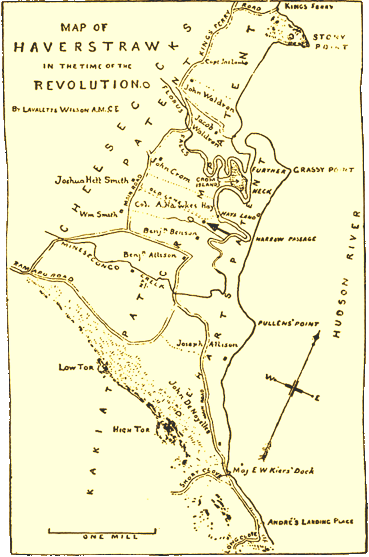 RHEINHARDT HAUS II was baptized on 21 Aug 1733 in Tarrytown, Westchester, New York (listed as "Reindert") with sponsors Johannis Clemens and wife Marritie, according to the Tarrytown Reformed Churchbook. He then married around 1855 (possibly to Margrietje Trumper, b. 1737). In the Haverstraw precinct of Orange County on July 17, 1775, Rheinhardt is listed as having refused to sign a petition to King George III, protesting the conduct of his soldiers at Lexington and Concord (although at least two of his sons did sign). RHEINHARDT HAUS II was baptized on 21 Aug 1733 in Tarrytown, Westchester, New York (listed as "Reindert") with sponsors Johannis Clemens and wife Marritie, according to the Tarrytown Reformed Churchbook. He then married around 1855 (possibly to Margrietje Trumper, b. 1737). In the Haverstraw precinct of Orange County on July 17, 1775, Rheinhardt is listed as having refused to sign a petition to King George III, protesting the conduct of his soldiers at Lexington and Concord (although at least two of his sons did sign).
Both Rinard House II (now called "Sr.," as his father had passed on) and a Rinard House III ("Jr.") appeared in Gilbert Cooper's Militia here and here, and in Col. Ann Hawkes Hay's Regiment here. Another son, John, subbed for both of them at times, according to his military pension.
Rheinhardt II was also allied with the Wheelers: He was at the baptism of Reinhart Willers on 11 Sep 1757 at Ramapo Lutheran Church. His wife's name isn't listed; only "Reinhard Hanns [Haus?] and his wife." ("Ramapo Lutheran Church Records, 1750-1817" in Proceedings of the New Jersey Historical Society, Vol. VIII, No. 1; April 1913, p. 7.)
Haverstraw was partitioned in 1791 to form the towns of Clarkstown and Ramapo, where some of his children still lived. Rinard was living in Goshen, Orange County, New York when he wrote his will on 10 Jul 1816 (proved 12 March 1818). He named children Rinard, Thomas, John, Jacob, William Christian, Mary, Margaret, Elizabeth and Christiana. Witnesses: Daniel Poppino, Sopha Poppino and Hulda Poppino." (Orange County Wills, F:200.) We have records of the following children:
CHILDREN OF RHEINHARDT HAUS II
|
|
RINARD HAUS III (Usually seen as "Rinert Haus, Jr.") signed a petition at Haverstraw, Orange, New York, in 1775 protesting the conduct of his British soldiers at Lexington and Concord, but he was still loyal at that time to King George III. He then served in Gilbert Cooper's Militia and Ann Hawkes Hay's Regiment during the Revolutionary War. In the 1790 census he's still living in Haverstraw. He then moved to Goshen before the 1800 census, and lived there until 1840, after which he disappeared from the record.
|
|
THOMAS HAUS, was in Hillsdale, Columbia, New York, in the 1790 census. In the 1800 census he was living in Warwick, Orange, New York, and was still there in the 1810 census.
|
|
JOHN HAUS was born on 14 Jul 1761 in Haverstraw. He served in Gilbert Cooper's Militia and Ann Hawkes Hay's Regiment. He then served with 2nd Lieutenant Thomas Blauvelt, and married Margaret Blauvelt later in life. A "John House" testified in 1833 for a John J Blauvelt, who was applying for a Revolutionary War Pension and Bounty-Land Warrant (Application Files Publication Number: M804, page 14), as well as for Rinard Hopper, whom he served with in New Jersey (Page 24). John died at Clarkstown, New York, on 1 Jan, 1845, and is buried at the Clarkstown Reformed Church Cemetery.
|
|
JACOB HAUS was living in Goshen, Orange, New York in the 1820 census.
|
|
WILLIAM HOUSE was born in 1756, in Ramapo, Rockland, New York. He fought in the Orange County Militia, according to pension records. William then became "a pioneer Baptist minister, who was located in Orange County. He was a man of strong faith and of great force of character, and was a masterful figure in those early days. He passed through many trials usual to pioneer preachers and was peacefully laid to rest, leaving three sons: Henry, Rheinhardt and Bradner, the two former sons of his first wife. He was twice married. His first wife was an Oblenis, of Clarksville Corners... Mrs. O'Blenis, first wife of Rev. William House, of Clarksville Corners, had two sons, Henry and Rheinhardt. Second wife had several sons, only one now living, Bradner, who is a Baptist minister. (From: Historical Record to the Close of the Nineteenth Century of Rockland County, New York, PART II, BIOGRAPHICAL, by Arthur Sidney Tompkins. Van Deusen & Joyce, 1902. Page 22)
|
|
CHRISTIAN HAUS, was born between 1756 and 1774. In the 1800 census, he is living in Clarks, Rockland County, New York with a wife and three children. He probably died soon after, as he isn't listed in the 1818 will of his father.
|
Farmers on the New York/New Jersey border like the Haus men formed their own communities and kept to themselves for the most part, until a key religious controversy in the Reformed Church stoked the fires of revolution.
The Dutch, who had settled the area in the 1600's, had been compassionate towards the poorer Palatines, and allowed their German Reformed churches into the Dutch Reformed Church—which meant they could appeal to the Classis of Amsterdam (Holland) for ministers and money to run the churches. The new German (and Polish) congregations were therefore known as the "Jersey Dutch." But then a period of tremendous religious and emotional upheaval, known as the "Great Awakening," swept through the British colonies in the 1730s, and those churches began to challenge the authority of Europe.
Their main gripe was the lack of authority within the American churches to ordain and educate ministers. With the proliferation of churches resulting from the Great Awakening revivals, there was a severe shortage of ordained holy men to preach the gospel (which is why you see the Haus family attending different churches, travelling to wherever their minister was preaching at that Sunday). There were only twenty Reformed ministers preaching in the American Colonies during the 1740s.
The problem was that anybody who aspired to the pulpit at that time was required to embark on a long, arduous, expensive, and often dangerous journey to Amsterdam for training and ordination. So there needed to be some kind of assembly with at least limited powers to educate and ordain ministers for the pulpit. Finally in 1747, the Classis of Amsterdam reluctantly gave its approval for the formation of such a body, which was called a Coetus.
However, the more conservative ministers in New York and New Jersey opposed this separation, feeling the church was losing touch with Old World tradition and God. Equally alarming to these ministers was the thought that a local classis could intrude into their own affairs much more efficiently than one which governed from Amsterdam. Therefore, they contested any attempt to break formal ties with foreign authority, and organized themselves into the rival Conferentie party.
|
William Franklin, Royal Governor of New Jersey (left), who signed the charter in 1766 that established Queen's College, named after Charlotte of Meckleberg, the Queen consort (right). The college was created to train clegy for the Reformed Church, and eventually became Rutgers University. |
"Why should the Palatine Boors be suffered to swarm into our Settlements, and by herding together establish their Language and Manners to the Exclusion of ours? Why should Pennsylvania, founded by the English, become a Colony of Aliens, who will shortly be so numerous as to Germanize us instead of our Anglifying them, and will never adopt our Language or Customs, any more than they can acquire our Complexion?"
—Benjamin Franklin
On November 10, 1766, William Franklin, Provincial Governor of New Jersey (and the illegitimate son of Benjamin Franklin), granted a charter for Queen's College, named in honor of Charlotte, the Queen Consort. The school (which eventually became Rutgers) was established to train Dutch Reformed clergy, giving more control to the Coetus.
Severe opposition to the formation of an American classis came from established Conferentie members. But the majority of Reformed parishoners opposed the Conferentie, feeling the movement was overzealous and reactionary, and sided with the Coetus party. These two opposing forces broke apart congregations, friendships and even families. Brothers in neighboring houses refused to look at or talk to each other on the street when leaving for rival churches on a Sunday. One faction would lock out the other from worship and attacks on members of opposing factions were common. Add to these problems a lack of church leadership, because by 1771, only forty-one ministers were available for one hundred churches, leaving the most outspoken and extreme in the congregations to take charge. And because of this, it started to get political.
Because the Conferentie rejected anything new and outside of tradition and wanted to keep European ties, they sided with the Loyalist British (or Tories), while the more liberal Coetus sided with the Patriots (or Whigs). The quiet, apolitical German population that had kept to itself was now taking sides in a revolution.
The infighting would become brutal and bloody. Formal armies were barely needed, as the citizens themselves began committing attrocities against each other. In 1774, the courthouse at the county seat in Tappan, Orange County, burned to the ground. The locals all suspected that it was the work of Tories, directed at deputy sherrif Ebenezer Wood. In response, militia campanies were formed, and Tories were exposed. Houses would then be burned, friends and relatives would be betrayed, and many lives would soon be lost.
At this point in our family history, we'll return to The House Family of the Mohawk, and author Melvin R. Shaver's line, using the original 1933 notes by Melvin Rhodes Shaver and Frank D. Duel, and update the lines that lived in the Hudson River Valley. Then, after I come to grips with the fact that they aren't any clearer than the Johannes and Rheinhardt lines, we'll move on to the Revolution, and the really fun stuff...
 |
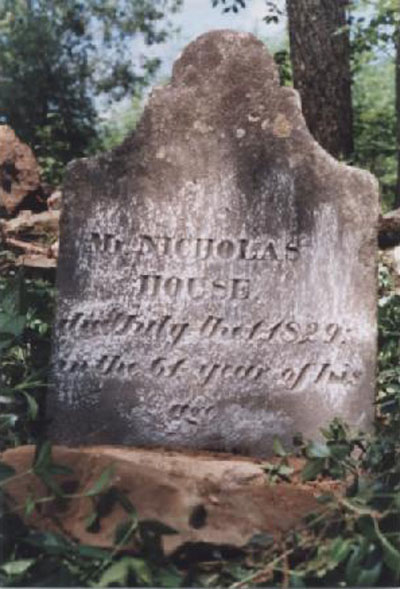
Grave of Nicholas House (1760-1829)
|
CHAPTER FIVE: JOHANN JURRIAN (GEORGE) HAUSS, also spelled Jurry, Jarrie and a million other ways, but he's the same person (we think).
TOP ILLUSTRATION: Philipsburg Manor is a historic house, water mill, and trading site located on US 9 in Sleepy Hollow, New York, near the home of Rheinhardt. It is now operated as a non-profit museum by Historic Hudson Valley; an admission fee is charged. The manor dates from 1693 when Frederick Philipse of Yonkers was granted a charter for 52,000 acres (210 km2) along the Hudson River by William and Mary of England. He built Philipsburg Manor at the confluence of the Pocantico and Hudson Rivers, creating it as a provisioning plantation for the Atlantic sea trade and as headquarters for a world-wide shipping operation. For more than thirty years, Frederick and his son Adolph shipped hundreds of African men, women, and children as slaves across the Atlantic. Now a National Historic Landmark (as of 1961), the farm features a stone manor house filled with a good collection of 17th-and 18th century period furnishings, a working water-powered grist mill and millpond, an 18th century barn, a slave garden, and a reconstructed tenant farm house. Costumed interpreters re-enact life in pre-Revolutionary times, doing chores, milking the cows, and grinding grain in the grist mill.
¹—One biproduct from this dispersion of Hauss men is how the spelling of the surname changed: Johann generally shows up in the records as "Hauss" while records of his children generally drop an "s" and spell it "Haus" or "Hous." Those who remained in the Hudson River Valley eventually began spelling their last name as "House;" Meanwhile, the descendants who grew up farther south, in Orange County and in New Jersey, began spelling it "Hause," and several generations later (in some cases), as "Hawes."
²—Because of family interactions, their descendants being neighbors, and baptism sponsors and comrades fighting in the same "Dutch" divisions of the Continental army, we can be sure we're connected to a son of Johann Christian Hauß. I'd love to tell you which son—but I can't with any certainty. Still, does it really matter? We can argue about the lineage all day. Whether John III's dad is actually Johannes or Johannes Rheinhardt, it still proves our lineage to past generations. And it leads us to the next link in our heritage.
SOURCES FOR THIS PAGE:
- Becoming German: The 1709 Palatine Migration to New York, by Philip L. Otterness. Ph.D. Cornell University Press, 2004
- The Mohawk Dutch and the Palatines, by Milo Nellis. 1951.
- History of 18th Century Germantown, by Walter Miller.
- The Mohawk, by Codman Hislop. Syracuse University Press. 1948, 1989.
- A Brief Sketch of the First Settlement of the County of Schoharie by the Germans, by John M. Brown
- White Cargo. the Forgotten History of Britain's White Slaves in America, by Jordan, Don And Walsh, Michael. Publisher: New York Univ. Press Date Published: 2007.
- Palatines, Liberty and Property: German Lutherans in Colonial British America, by A.G. Roeber. The Johns Hopkins University Press, Baltimore and London, 1998.
- So. Schraalenburgh Baptisms; Tappan Ref Ch (Tappan, Rockland Co., NY) Baptisms in Cole's History of Rockland County
- THE AMERICAN YEOMAN: AN HISTORICAL ECOLOGY OF PRODUCTION IN COLONIAL PENNSYLVANIA, by Michael David Scholl; A dissertation submitted to the faculty of the University of North Carolina at Chapel Hill in partial fulfillment of the requirements for the degree of Doctor of Philosophy in the Department of Anthropology. Chapel Hill 2008.
- The Revolutionary War in the Hackensack Valley: the Jersy Dutch and Neutral Ground, by Leiby, Adrian C. Published by Rutgers University Press. 1962
- The Reformed Church In America, "Struggle For Eccesiastical Independence" (1708-1792). Pages 102-117
- Baptismal Record of the Tappan Reformed Church, Regular Congregation, Tappen, Rockland, New York. FHL Microfilm #1016876. Microfilm of Cole Transcript of Tappan & Clarkstown, Reformed Church. One more possibility: Catharina Haus. b. 24 Dec 1751; Christening: 19 Jan 1752 Reformed Church, Tappen, Rockland, New York; Baptism: Baptism of Catharina Haus 19 Jan 1752 Reformed Church, Tappen, Rockland, New York. Sponsors were Jan Smit and Rachel [Compiler - Wheeler], his wife. Parents listed as Johannes Haas and Sara Wilkissen
- History of Montgomery Classis, by W.N.P. Dailey, 1916. "While the Holland Dutch first came to the New World in 1609, and at once established their church and school, it is noteworthy that all elements of the Reformed Churches of the American continent-from France and Switzerland, and the German Palatinate-the churches of the Reformed faith established in Virginia (at times meaning the Atlantic coast lands), and Maryland, and Pennsylvania-all turned to the Classis of Amsterdam (Holland) for men and money."
- Historical Record to the Close of the Nineteenth Century of Rockland County, New York, by Arthur Sidney Tompkins. Van Deusen & Joyce, 1902. 769 pages. Page 22: "THE HOUSE FAMILY in Rockland county are descendants of Rev. William House, a pioneer Baptist minister, who was located in Orange County. He was a man of strong faith and of great force of character, and was a masterful figure in those early days. He passed through many trials usual to pioneer preachers and was peacefully laid to rest, leaving three sons: Henry, Rheinhardt and Bradner, the two former sons of his first wife. He was twice married. His first wife was an Oblenis, of Clarksville Corners. Henry House, the eldest son, carried on a grocery store in Nyack for a time. He afterwards removed to Paskak, near the old church, where he died at the age of eighty. He was twice married, first to Elizabeth Smith and after her death to Martha Serven (widow). He left a family of four children, William S., who died young; Peter S., who died of the cholera, and at the same time his young wife and babe also died of this epidemic. The two remaining sons, John and Garret Oblenis, became well and favorably known throughout the State. Garret Oblenis House was a captain for many years upon the Smith line of steamboats. His chief commands were the Isaac P. Smith and the Adelphi. Captain House is still living in Ulster county at the age of eighty-nine. He has been twice married, first to Anna Elizabeth Hasbrouck, of Saddle River. His second wife was Elizabeth DuBois and his children were: Wm. Saunders House, MD., who died in January, 1900; Henry Hasbrouck House, M.D., and Mary DeWitt House. His first wife was Martha Griffin, his second was Eleanor D. Robinson. He left a family of three children, two sons and one daughter: Garret O'Blenis, Jr., DeWitt Hasbrouck and Elizabeth Burgess. Henry Hasbrouck House, M.D., the second son,married Parmelia Ver Valen, a daughter of a well-known banker and capitalist of Haverstraw, Richard Ver Valen. Dr. Henry Hasbrouck House died in April, 1896. He is survived by his wife and two sons: William Stetson, the present Postmaster and druggist of Rockland Lake, and Clarence Ver Valen, employed as cashier by a well known New York house. Mary DeWitt, the third child of Captain House and the only daughter, married W.D. Smith, and died in April, 1890. She was the mother of one child, Florence, who died very young. Mrs. O'Blenis, first wife of Rev. William House, of Clarksville Corners, had two sons, Henry and Rheinhardt. Second wife had several sons, only one now living, Bradner, who is a Baptist minister."
- Charles R. Hause- 532 Lange Court- Libertyville, IL. 60048, or: 1216 Charles Dr. , Shawnee, OK. 74801 Dec. 18,1981
|



![]()
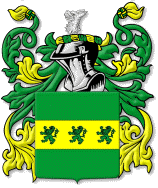









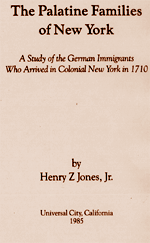
![]() View Image
View Image RHEINHARDT HAUS II was baptized on 21 Aug 1733 in Tarrytown, Westchester, New York (listed as "Reindert") with sponsors Johannis Clemens and wife Marritie, according to the Tarrytown Reformed Churchbook. He then married around 1855 (possibly to Margrietje Trumper, b. 1737). In the Haverstraw precinct of Orange County on July 17, 1775, Rheinhardt is listed as having refused to sign a petition to King George III, protesting the conduct of his soldiers at Lexington and Concord (although at least two of his sons did sign).
RHEINHARDT HAUS II was baptized on 21 Aug 1733 in Tarrytown, Westchester, New York (listed as "Reindert") with sponsors Johannis Clemens and wife Marritie, according to the Tarrytown Reformed Churchbook. He then married around 1855 (possibly to Margrietje Trumper, b. 1737). In the Haverstraw precinct of Orange County on July 17, 1775, Rheinhardt is listed as having refused to sign a petition to King George III, protesting the conduct of his soldiers at Lexington and Concord (although at least two of his sons did sign).






